Time Travel at Museu d’Historia de Catalunya
- alexah1111
- May 28, 2022
- 5 min read
By: Alexa Herrera
As you walk by the shops, restaurants and the ports in Barceloneta, you will be surprised to see a history museum in an old industrial warehouse.
The Catalan History Museum is an interactive museum for anyone curious about the roots of the region.
The museum has two large floors that showcase different time periods through art, books, clothes and other objects. It has interactive elements where visitors can push buttons to hear sounds or have things light up to display more information.
As people walk through the museum they will feel like they are traveling through different periods of history.
History of the Museum
The building is the only surviving construction from the old industrial port of Barcelona. It was built in 1885 and was finished 17 years later in 1902.
The warehouse was modern for its time with railroad tracks installed around the building to make it easy to move around. The building also had conveyor belts and lifts inside.
In 1991, the Port Board commissioned the restoration for the outside of the building. Then three years later, architects Josep Benedito i Rovira and Agustí Mateos i Duch created a design to remodel the building to be the museum.
The museum opened in 1996 and receives thousands of visitors every year. The museums collection consists of documents and objects that were donated.
The Centre for the Contemporary History of Catalonia and its library are also located in the building.
First Floor
The first floor houses prehistory to the 18th century. Visitors can look at tools used for everyday life and for hunting from the 7th century.
Walking through the exhibit, you can learn about the influence Greek and Phoenician societies had on the region of Catalan and the development of Iberian culture.
Moving on to the next part of history, visitors can immerse themselves into the bronze age. This part has a rotary mill, among other objects, that was used to grind cereal.
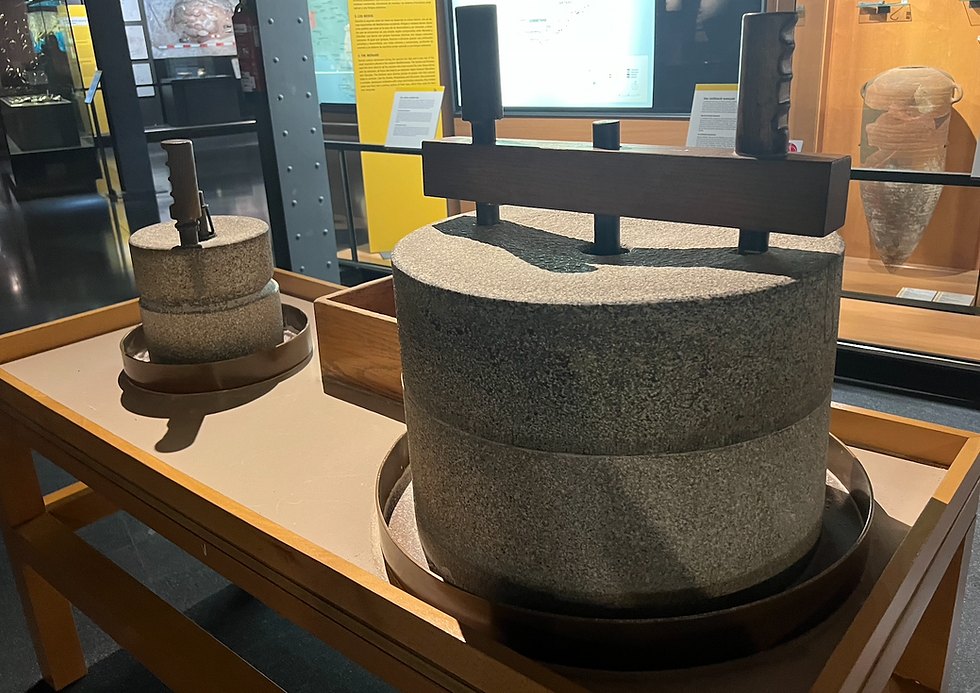
The rotary mills in the Catalonian region were characteristic of the Iberian and Roman periods.
A replica of a typical house during that time is also on display so visitors can get a feel for what it was like to live during the bronze age.
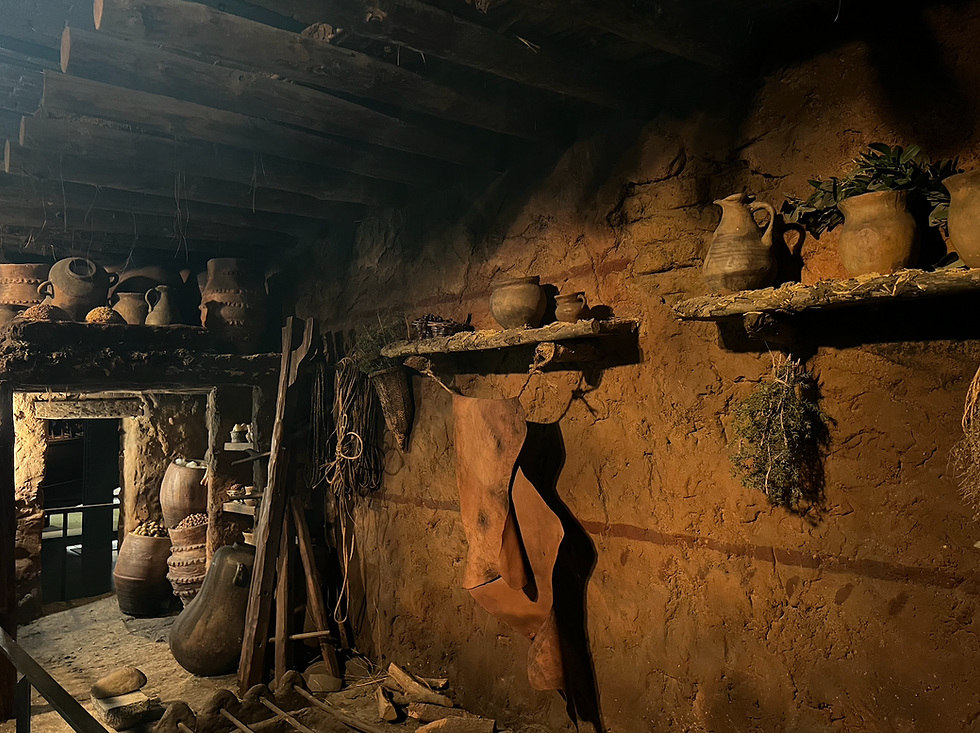
This is an example of what a bronze age house looked like. It was long and narrow with the base of the walls made of stone and the rest made of adobe.
You can also walk through a typical house of craftsmen from the 11th century and the museum has a fake irrigation system. The system shows the influence of the Moors on society.
To see a demonstration, people can push a button and water runs down demonstrating how the process works.
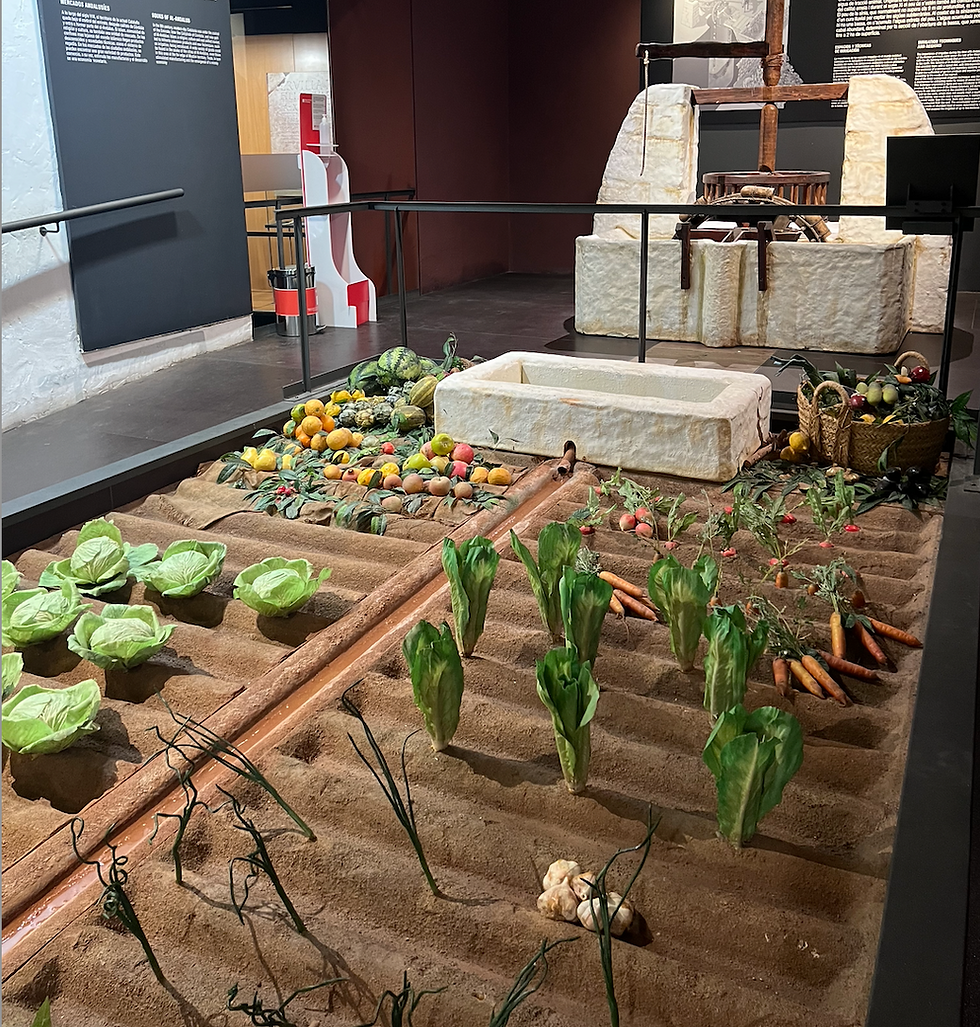
One of the main techniques for irrigation was the Noria. It originated in Syria and created an abundant supply of water to allow for irrigation
These interactive features allow visitors to truly understand what life was like and people can learn visually.
Elia Martín, a visitor from Italy, said that she has enjoyed her first visit to the museum.
“By pressing buttons that make things light up and show more about the exhibit makes me more interested,” she said.
An especially interesting part of the first floor is the history and legend of the coat of arms of Catalonia. The origins for the coat of arms are not definitively known but a legend was created about it. The legend has it that the French king Louis le Pieux dipped his fingers in the blood from the Count of Barcelona, Guifré el Pelós, and ran his fingers down the shield of Guifré.
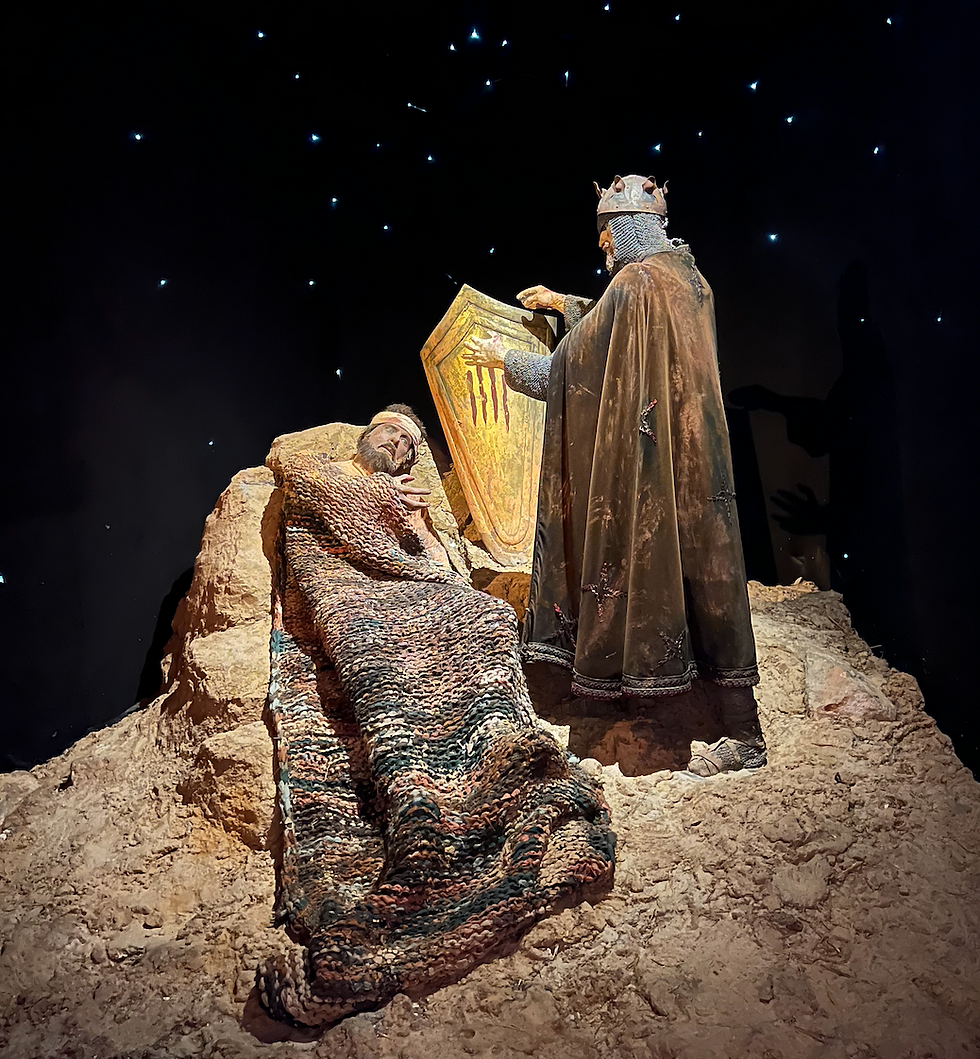
The museum has these statues demonstrating the legend of the legend of the coat of arms. The legend was first created in the 16th century.
The Second Floor
After visitors are done walking around the first floor, they can walk upstairs and explore history from the 18th to the 21st centuries.
During the 18th century the foundations for the Industrial Revolution were laid, which led to growth in cities and in social groups.
You can see objects from this time period such as a device to distill wine and liquor.
From the 19th century, you can see a book from a textile company that has different types of fabrics in it.
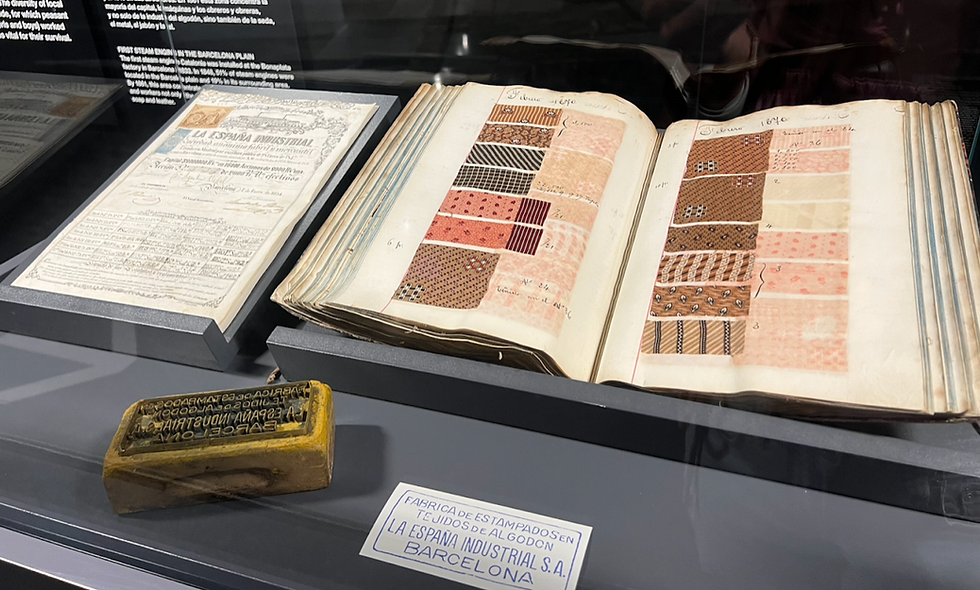
This book was from España Industrial which was a textile mill started in Spain but moved its headquarters to Barcelona in 1851.
The iron and steel industry also played an important role during this time. The museum has a replica of a steam train and information about the railroad industry.
An interesting interactive part of the museum is featured on this floor. There are different types of outfits on hangers that you can take and hold up to yourself and look in the mirror. These outfits represent the types of clothing certain people would wear. One of them was a maid’s uniform and another was a cotton mill worker’s uniform.
Ana Maseda was one of the people engaging with this display. Maseda, 15, said she was visiting Barcelona for the weekend and wanted to come to the museum because she likes history.
“I feel like trying on the clothes turns me into a person from that time,” she said.
After trying on the clothes of people from the working class, you can wander over to what it would feel like to be in the upper class known as the bourgeoisie. There are different pieces of furniture that show how those people liked to have ornate decor in their homes.
By seeing these stark contractions in dress and decor for the two different social classes, visitors can truly understand what it was like to live during the 19th century.
Moving onto the 20th century, visitors can learn about how electronics became more popular. There is a shelf full of old phones, typewriters and other machines that became popular to use.
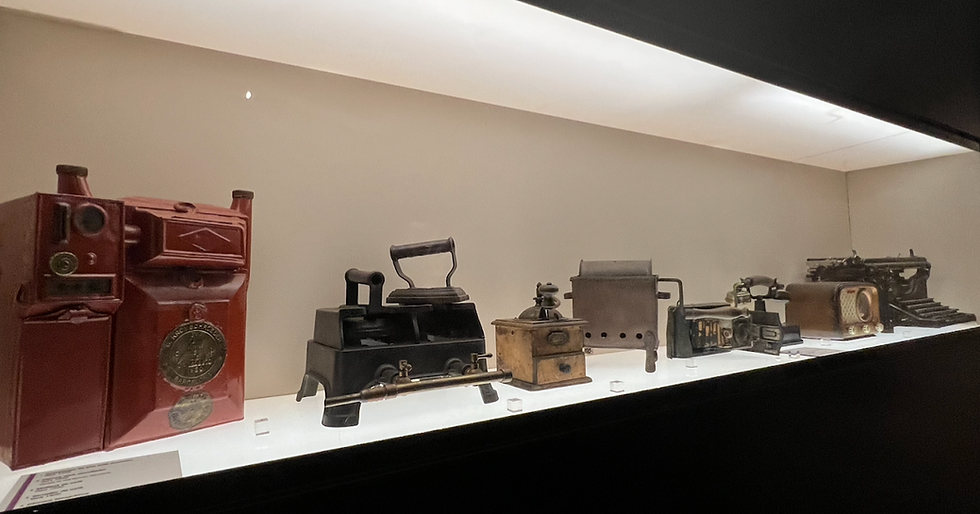
The use of electronics coincided with the creation of the eight-hour work day.
Maseda said she liked the second floor the best because it focused on the later time periods.
“I really liked looking at and reading about the typewriters because I can’t believe they had to use that instead of computers,” she said.
There are a number of other objects that represent history in the 20th century such as a car and a model of a typical home from the 1960s.
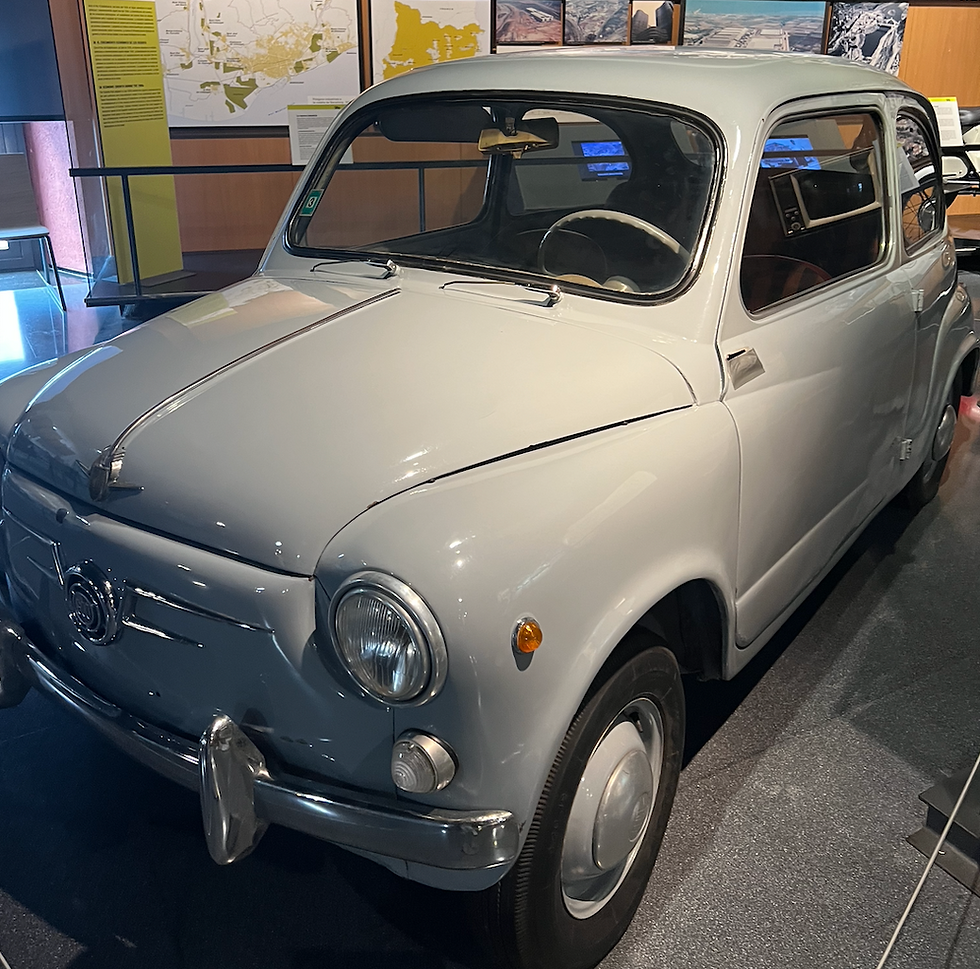
Cars became very popular in the 1960s with the Seat 600 motor car becoming the first widely popular car in Barcelona.
The 21st century part of the museum does not have as much as the rest because it only consists of the years 2000 to 2007. Although, it does mainly talk about the modern society in Catalonia.
Tickets and Tours
The museum is open everyday at 10 a.m. except for Mondays. Usually it closes at 7 p.m.,
but on Wednesdays it is open until 8 p.m. and on Sundays until 2:30 p.m.
You can purchase tickets online from the museum’s website, and it costs €6. The reduced rate is €3 for people 65 years and over, students, pensioners and others listed on its website.
The museum also offers free admission for people under 16 years old, unemployed and many other people also listed on its website.
The regular ticket gives visitors access to the exhibition of the first and second floors. There is an audio guide that people can download onto their phones to use while they walk through. The ticket also includes access to the museum terrace on the fourth floor to get a breath of fresh air.
If you are interested in going, you can look at directions and how to get there and other useful information online.
A Walk through History
By spending a couple of hours in the Museu d’Historia de Catalunya, you can get a glimpse into what life was like for people who lived during the seventh or 17th century.
With interactive features, the museum makes visitors feel like they are traveling through time for a couple of hours and is great for all ages.

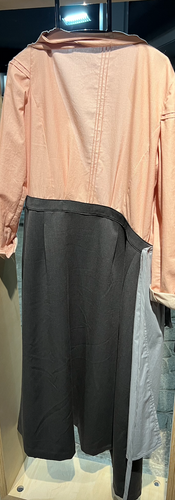

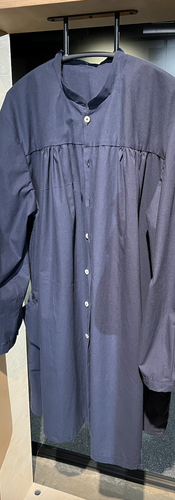





Comments